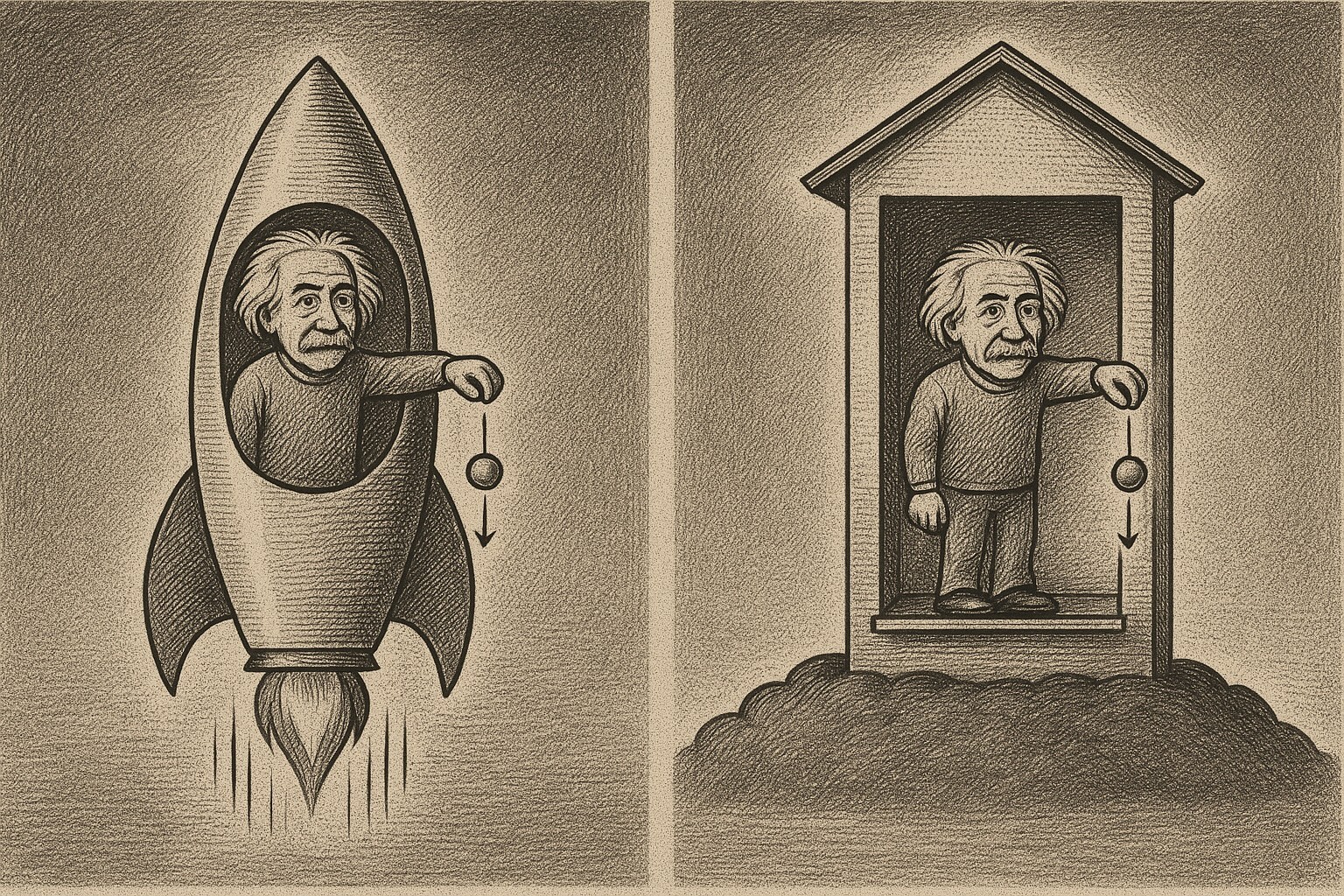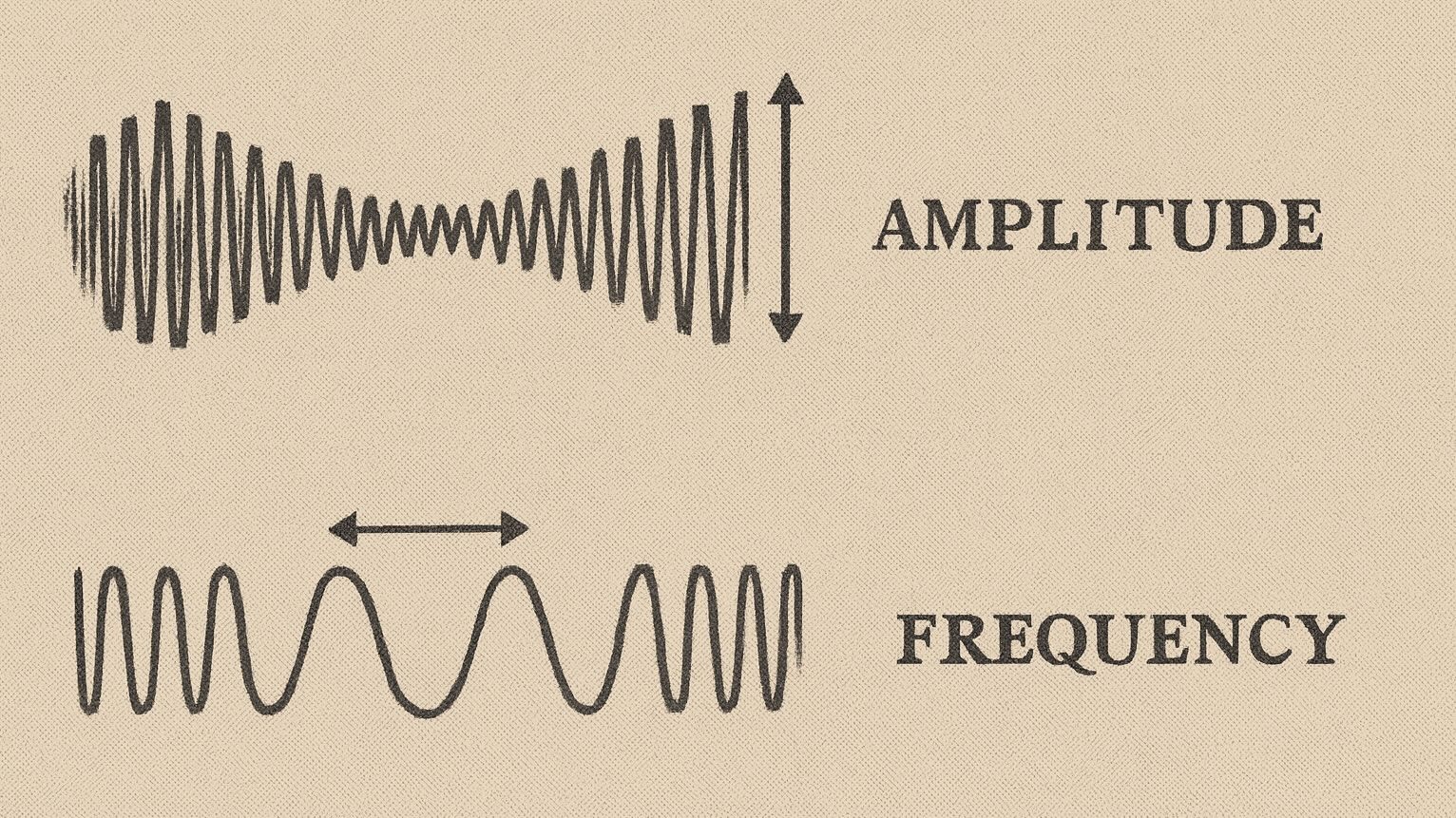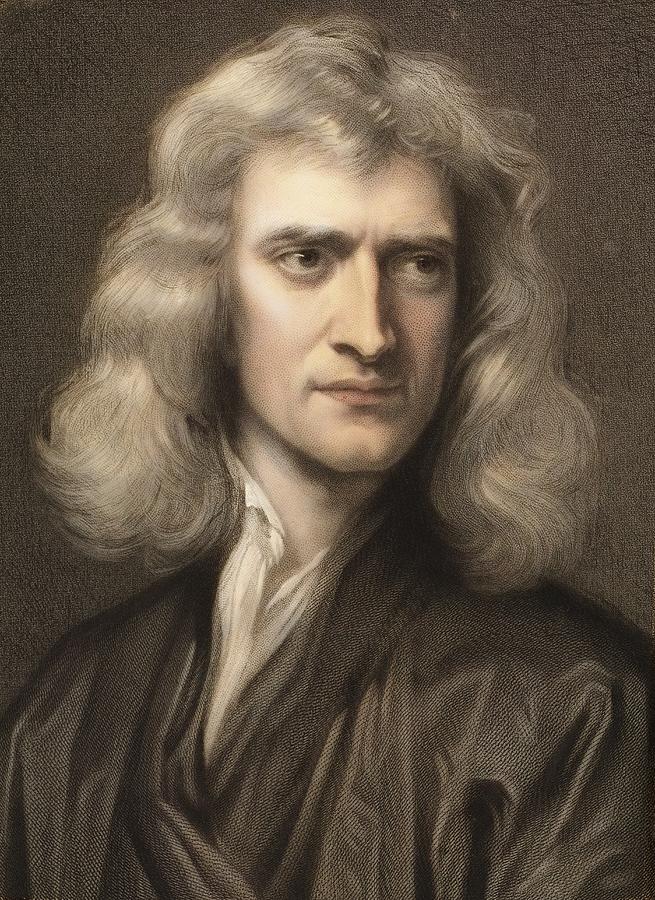For centuries, science treated time as a passive backdrop. Isaac Newton envisioned it as an absolute, universal clock. Albert Einstein revolutionized this view with Relativity, demonstrating that time is dynamic and inseparable from space.His theories showed that motion and gravity both affect the rate at which time passes—a phenomenon known as time dilation.
Einstein provided the rules for how time behaves, but not the underlying mechanism. He showed that mass-energy warps spacetime, causing time to slow down, but why? Why should the presence of energy alter the passage of time?
Time-Energy Equivalence Principle
To understand time, let’s go back to Einstein’s equivalence principle — the idea that gravity and acceleration are, locally, the same thing.
If you’re in a rocket accelerating through space, your experience of time slowing down is identical to standing still in a gravitational field. So if acceleration slows time, and gravity is equivalent to acceleration, then gravity must slow time too. Mass creates gravity, which means mass itself is a source of time dilation. And because energy and mass are interchangeable (E = mc^2), even pure energy — light and radiation — can also warp time.
In other words, acceleration, gravity, mass, and energy are all connected by the same effect: they change the rate at which time flows. This idea becomes the foundation of the Time–Energy Equivalence Principle:
The presence of any form of energy density within a region of spacetime is equivalent to a localized slowing of the rate of time in that region.

Fig. 1: The Equivalence Principle connects gravity and acceleration by saying they are locally indistinguishable. Time dilation, from Special Relativity, means time runs slower for an accelerated observer compared to another. By the Equivalence Principle, the same effect appears in a gravitational field.
If the speed of light is a universal constant, then spacetime must be a medium whose characteristics determine that speed. Moreover, from the Time-Energy Equivalence Principle, everything we perceive: matter, energy, space, and time itself emerges from the behaviour of this medium. Let's call this medium the Timeflow Field.
Quanta of Spacetime
Imagine the universe not as a collection of particles moving in empty space, but as a single, pervasive quantum field. Like any quantum field, it never stands still. It vibrates, oscillates, and evolves. These oscillations are like pixels, rendering what we perceive as space, matter, radiation and each tiny vibration represents the fundamental tick of the universe’s clock.
At the smallest scale of this field, each oscillation can be thought of as a quantized unit of Timeflow — a fundamental “pixel” of reality. Let's call this unit the Timeon. Each Timeon is a localized pulse of the Timeflow field itself — the smallest possible cycle of time’s vibration.
Each Timeon has to perform a calculation before updating to its next state. The more information it needs to process—the more complex its interactions—the longer that calculation takes.
According to quantum mechanics, energy is fundamentally a measure of frequency (E=ℏω). This means that spacetime quanta with higher oscillation frequency are processing more energy or internal information. And because computation takes time/energy, their local clock runs slower relative to calmer regions.
This is the origin of gravitational time dilation in this theory:
- A region with high energy (high ω) takes longer to evolve or compute its next state → time slows down.
- A region with low energy (low ω) evolves/computes faster → time speeds up.
In this vew, time is literally how busy each part of the universe is with its own internal processing.

Fig. 2: Timeon Amplitude (A): This represents the intensity or "size" of the field's oscillation at that point, intrinsically tied to the local scale of space itself. Timeon Frequency (ω): This is the speed at which the field's quantum evolves from one state to another. It is the universe's most fundamental clock.
Why Space Shrinks and Expands?
Each Timeon's amplitude A represents the intensity of its oscillation. When the frequency of oscillation increases, the ”pixel” vibrates with more energy and therefore with a larger amplitude. But because the speed of information transfer between Timeons — the speed of light — must remain invariant, when the Timeon's own oscillation becomes more intense, its size relative to its neighbors — shrinks.
Locally, energy density rises: the pixel “stretches” its internal vibration. Globally, the network adjusts by tightening the surrounding geometry so that the information transfer rate remains constant.
This is why in regions of high energy density, local clocks tick slower (time dilation), and rulers contract (length contraction). The time itself vibrates more strongly but occupies less relative space.
Why Time Flows?
But why does any of this change? Why doesn’t the universe simply freeze? Why is everything — from atoms to galaxies — constantly evolving?
Every Timeon can relate to its neighbors in only two ways: it can be in sync (ordered) or out of sync (disordered). Across the cosmos there’s a continuous competition between these two drives:
- Order—synchronized Timeons striving to preserve coherence.
- Disorder—asynchronous Timeons pulling toward randomness.
This tug-of-war gives rise to the flow of time itself. Ordered regions collaborate, building larger patterns to maintain stability; disordered regions push the universe toward change. From their tension, the universe evolves—from a dense, hot, uniform beginning into the vast, cool, and intricately structured cosmos we see today.
Atoms, stars, galaxies, life, and even technology are products of this same ancient contest between order and disorder. Structured systems tend to cooperate with other structures, forming greater wholes and resisting decay as long as possible.
I call this tendency the primordial survival instinct—the urge of ordered energy to preserve its state against the spreading tide of entropy.
So What is Time?
Based on Time-Energy Equivalence principle, we have defined a Timeflow — a quantum field that underlies spacetime and all forms of energy. The quanta of this medium is a Timeon, every “pixel” of the universe, is constantly oscillating. Its frequency represents energy and mass, and inversely, the local speed of time. Its amplitude defines the macroscopic scale — the size of the surrounding geometry.All of this emerges from one universal rule: the constancy of the speed of light — the constant rate at which information transfers between neighboring Timeons.
Time, then, is not a passive backdrop or an external clock. It is woven from the same fabric as energy, mass, and space themselves — from frequency and amplitude, from change and scale, from the eternal balance between order and chaos.
Time is not something the universe moves through. Time is what the universe is made from.
